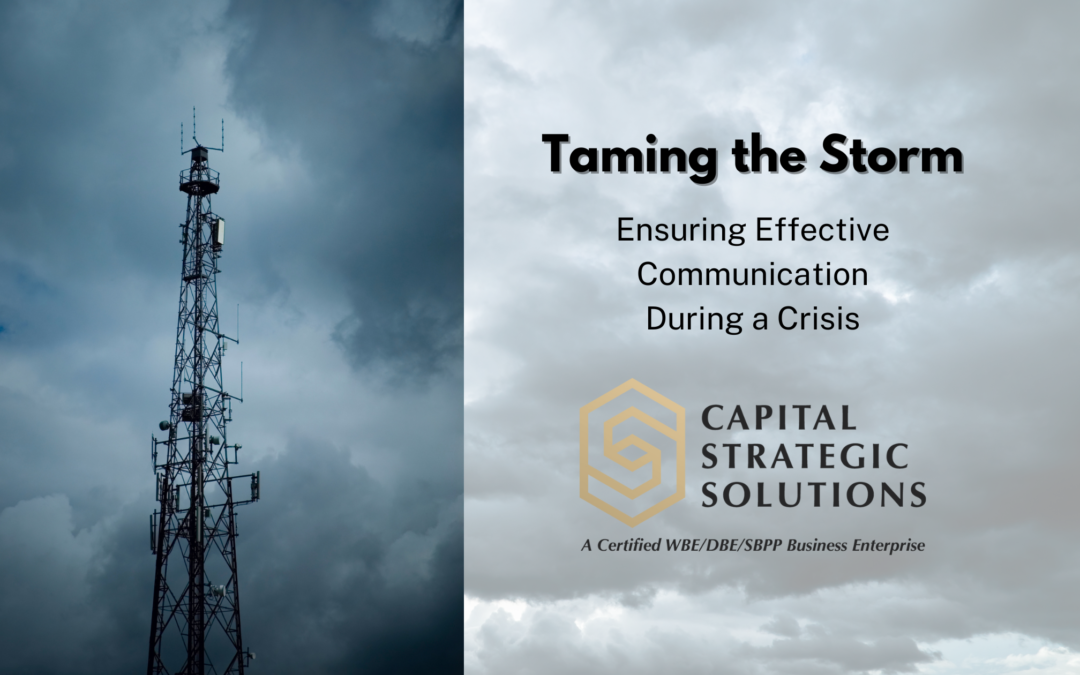When a crisis unfolds, chaos can quickly permeate through a community, sending people into panic and destabilizing your governmental operations. Ensuring clear, transparent and timely communication is paramount to reducing uncertainty and volatility, safeguarding trust and maintaining a semblance of control.
Here are the eight essential elements of effective communication during a crisis:
- Transparency and Honesty
Setting the Tone: In times of crisis, conveying messages with transparency and honesty establishes trust amongst employees, stakeholders and the public. Clearly communicate the nature of the crisis, the steps being taken to address it and the anticipated impact.
Consistency is Key: Ensure consistent messaging across all channels and spokespeople to avoid confusion and misinformation.
- Timeliness
Swift Response: A rapid initial response to a crisis demonstrates leadership and control. Even if all facts are not yet available, acknowledge the situation and commit to providing updates.
Ongoing Updates: Regularly share updates on the crisis management process, ensuring the involved parties stay informed and engaged.
- Empathy and Reassurance
Humanizing Communication: Express empathy towards those affected by the crisis and reassure them that their welfare is a top priority.
Providing Support: Besides providing direct support in the form of shelter or services, be sure to offer other support mechanisms available to them, such as counseling services or helplines.
- Two-Way Communication
Encourage Feedback: Create channels through which the public, stakeholders and even your employees can express their concerns and ask questions.
Act on Input: Demonstrate that you value and consider the feedback, adjusting crisis management plans if necessary.
- Clear and Understandable Messaging
Avoid Jargon: Ensure that your communication is accessible and understandable to all, avoiding industry jargon or overly technical language.
Use Various Formats: Leverage different formats such as video, infographics and text to ensure messages are clear and digestible.
- Utilize the Right Channels
Diverse Platforms: Employ various communication channels to disseminate information, such as emails, social media, press releases and internal communication tools.
Targeted Communication: Tailor messaging and select appropriate channels based on the target audience, ensuring the right people receive the relevant information.
- Preparedness and Planning
Crisis Communication Plan: Establish a comprehensive crisis communication plan that outlines the strategy, key messages and spokespersons.
Training and Simulations: Ensure that the crisis management team and spokespeople are trained and prepared through regular drills and simulations.
- Post-Crisis Communication
Analysis: Conduct a thorough analysis of the communication strategy deployed during the crisis to identify what worked and areas that require improvement.
Communicate Lessons Learned: Share the outcomes and lessons learned from the crisis management process with internal and external stakeholders, demonstrating a commitment to improvement and preparedness for future crises.
Amid the storm of a crisis, effective communication stands as a beacon of stability, guidance and reassurance for the public and our other involved stakeholders. By integrating transparency, empathy, clarity and engagement into our communication strategies, we can tame the tumult while building trust with the public. Always remember, navigating through a crisis is not about avoiding the storm, but about sailing through it together, with clear, strong and supportive communication as our guiding star.
Capital Strategic Solutions can develop communications plans to help your agency communicate effectively and consistently in the event of a crisis. Our emergency management and communications teams have more than 50 years cumulative experience working in crisis plan development and management.
For more information, visit our Emergency Management and Public Safety services page.

